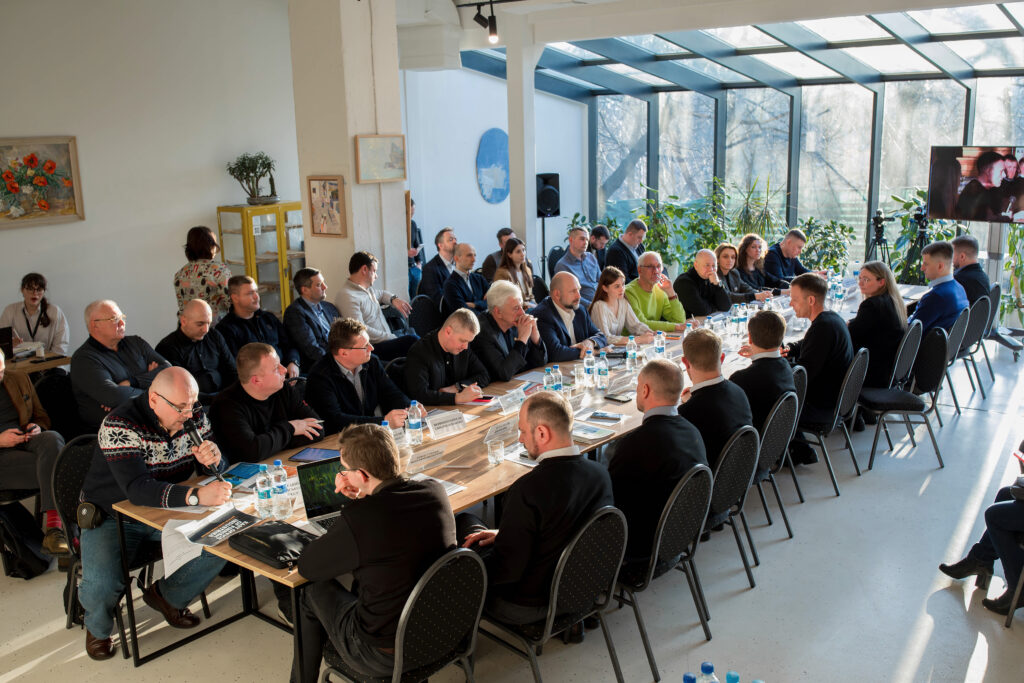
The writer of this guest pen, Lev Partskhaladze, is the President of the Confederation of Builders of Ukraine. CBU is the largest industry union in Ukraine, with over 800 members, covering about 80% of construction industry companies in Ukraine. East Office of Finnish Industries works closely with the union and became its strategic partner this spring.
Rebuilding Ukraine: Progress and Future Prospects
The Ukrainian construction market is gradually recovering, with a noticeable revival attributed to the restoration of facilities damaged by shelling. Currently, there is an active phase of implementation for these projects.
Works on the construction of fortification structures are also underway. Some factories manufacturing concrete structures have orders booked six months in advance, indicating both the substantial workload and the urgency for Ukraine.
It’s worth noting that due to military actions, new construction is not possible in the eastern region and territories close to the front line. In these areas, only restoration or repair works are possible.
Conversely, in the central and western regions, residential and commercial construction is gaining momentum and actively developing. The fear of war among Ukrainians is diminishing, but the main problem now is the lack of clarity about long-term prospects, which is also slowing down the development of the construction sector
It’s clear that once the war ends, a considerable number of construction companies will be required for reconstruction efforts, given the colossal volume of work ahead and our current lack of preparedness.
The primary obstacles restraining the market are uncertainties, particularly political delays in decision-making by our Western partners, especially the USA. Progress in Europe, however, presents a more positive outlook.
Capital for reconstruction is available; however, once full-scale reconstruction begins, it will not be enough. Currently, the demand for construction materials is being covered by Ukrainian manufacturers. However, there will be a significant shortage of skilled workers, including both managers and labourers, as many men who previously worked in construction are currently serving on the front lines.
Regional Dynamics: Challenges and Progress
I believe that the construction industry will be the locomotive of Ukraine’s development. We will have the opportunity to restore everything that was destroyed or damaged and build anew, with modern standards rather than Soviet principles, which are outdated not only visually, but also technically.
Ukraine will have incredible opportunities and we need to take advantage of them. Significant capital will be allocated for the reconstruction of Ukraine.
For a long time, the construction industry in Ukraine has been competitive, not monopolistic or controlling. Demand is entirely shaped and met by private construction companies that know how to operate effectively. The only requirement is capital, which is much more essential than in other industries.
The total direct damages to Ukraine’s infrastructure during the full-scale war as of January 2024 amounted to almost $155 billion (including damages from the sabotage of the Kakhovka Hydroelectric Station by the aggressor country on June 6, 2023).
Housing remains the largest category of damage, with over 250,000 buildings damaged as of January 2024. This includes 222,000 private homes, over 27,000 apartment buildings, and 526 dormitories. The direct damages from the destruction of these facilities are estimated at $58.9 billion, according to KSE data. The regions with the highest number of destroyed residential buildings are Donetsk, Kyiv, Luhansk, Kharkiv, Chernihiv, and Kherson.
Infrastructure damages as of early 2024 amount to $36.8 billion. According to the latest data, 78 small, medium, and large private enterprises, as well as 348 state-owned enterprises, have been destroyed or damaged.
Due to military actions, the total direct damages from the destroyed energy sector infrastructure continue to increase, reaching $9 billion, and the damages to the agricultural sector amount to $8.7 billion.
Looking Ahead: Innovation and Collaboration
In terms of new housing construction, before the war, the provision level was 24 sq.m. per person, with 80% consisting of outdated housing. In comparison, European figures range from 50 to 60 sq.m Therefore, based on average data from LUN.UA (construction data web resource) analysts regarding housing commissioning up to 2022, it would take Ukraine about 200 years to reach the European level.
Currently, we need to restore damaged and destroyed objects and build new housing and commercial real estate. It’s good to note that during the Soviet era, there was a lack of modern commercial amenities such as shopping centres, logistics hubs, and hotels. The existing infrastructure was specialized and state-owned, serving specific purposes rather than commercial ones.
Therefore, Ukraine is undoubtedly interested in the experience of high-tech companies. Wooden houses and modular construction are gaining momentum as a “culture.”
One example of laying a successful foundation for cooperation between Ukrainian and Finnish companies was a meeting with the CBU, organized at the initiative of East Office Finnish Industries in early March 2024. During the dialogue, companies such as KONE, Konecranes, and Peikko expressed their readiness to collaborate with Ukrainian businesses.
We are particularly interested in Finnish businesses starting the production of building materials in Ukraine, involving leading architects and engineers, and encouraging potential investors to enter the Ukrainian construction market. In particular, by constructing residential and commercial real estate, as well as locating production facilities in Ukraine.



